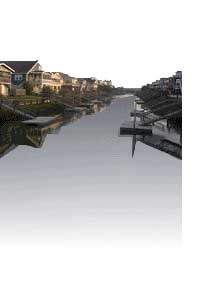|
Water:
Unless you can be certain of appropriate chlorination and treatment of tap water, or in regions of poor sanitation, it is best to assume that only the following are safe to drink:
Beverages, such as tea and coffee, made with boiling water.
Canned or bottled carbonated beverages.
Beer and wine.
In addition, in regions where water may be suspect, ice, fresh foods potentially cleaned in tap water, containers that may have had fresh water in them, and tap water for dental hygiene should also be avoided. In general, it is safer to drink directly from a can or bottle of a beverage than from a questionable container, but water on the outside of the can may be contaminated.
Food:
Improperly prepared, cooked or stored food can be the cause of serious illness. In general, you should consider unpasteurized milk and uncooked food, other than fresh fruit or vegetables, which can be peeled or shelled by yourself, as likely sources for contamination and possibly unsafe. Remember, "Cook it, peel it or leave it" and most times you will be safe. However, even appropriately cooked foods, which are stored improperly, can cause illness. So if you are uncertain of how a previously prepared food has been stored do not eat it
|
|  |
|
Treatment of water
Boiling is the best method to assure that tap water is safe. It should be brought to a vigorous boil for 5 minutes and allowed to cool to room temperature. Do not add ice. At high altitudes boil a few extra minutes. Pouring water from one container to another or adding a pinch of salt will improve the taste.
Chemical disinfection with iodine or chlorine is another alternative means to decontaminate water if boiling is not possible. This can be accomplished by adding 5 drops of a 2% solution of Tincture of iodine, or 2-4 drops of 2-4% chlorine (common laundry bleach), to 1 quart or liter of water. If the water is cold or cloudy use 10 drops. Allow the water to stand for 30 minutes before using. Iodine should not be used during pregnancy. Alternatively, talk to the local pharmacies for information on commercially available water disinfectent, Portable-Aqua, etc. can be used according to the manufactures instructions.
Portable filters have not been studied extensively and therefore no recommendations regarding their use can be made.
As a last resort, if no safe water is available or can be obtained, tap water that is uncomfortably hot to the touch is usually safe. Allow the water to run until it has reached its maximum temperature, collect it in a thoroughly cleaned container and allow it to cool to room temperature. It may then be used for drinking and brushing teeth. |
|
